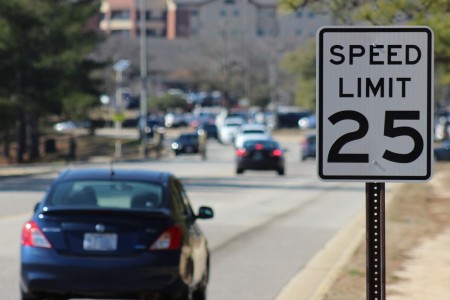Navigating Speed Limits and the Basic Speed Law
Defensive Driving |
California, the Golden State, offers breathtaking landscapes and bustling cities, all connected by an extensive network of roadways. To ensure safe and responsible driving, it’s crucial for motorists to understand California’s speed limits and the Basic Speed Law. In this article, we’ll explore the significance of these regulations and how they impact your journey on California’s roads.
This blog may contain affiliate links, and if you make a purchase through these links, we may or may not earn a commission at no extra cost to you.
What Are Speed Limits
Speed limits are the maximum legal speeds allowed on specific roads or in designated areas. They are established to promote road safety by accounting for various factors like road conditions, traffic volume, and the presence of pedestrians. Speed limits are conveyed through road signs and are enforced to ensure safe driving practices.
California’s Varied Speed Limits
California features diverse road types, from busy highways to tranquil residential streets. As a result, the state has varying speed limits to suit each situation. For instance, highways typically have higher speed limits compared to residential neighborhoods, where lower limits aim to protect pedestrians and children.
Basic Speed Law in California
The Basic Speed Law in California is a crucial element of responsible driving. It requires drivers to adjust their speed according to road and weather conditions, regardless of posted speed limits. Even if a sign indicates a higher speed, if conditions dictate otherwise, you must slow down.
Adverse Weather Conditions
California’s diverse climate means drivers must adapt to various weather conditions, including rain, fog, and snow. Basic speed laws mandate reducing speed when conditions are adverse. Rain-slicked roads, reduced visibility, and icy surfaces necessitate slower speeds for safety.
Residential Areas and School Zones
In residential neighborhoods and around schools, lower speed limits are enforced to protect pedestrians, especially children. Drivers must be vigilant in these areas, respecting the lower limits, and being prepared to stop quickly if necessary.
Freeways and Highways
California’s highways and freeways often have higher speed limits due to their controlled access and design. However, it’s vital to adjust your speed according to traffic conditions, maintaining a safe following distance.
Penalties for Speeding
Disregarding speed limits and the Basic Speed Law can result in fines, points on your driving record, and increased insurance rates. In extreme cases, it may lead to license suspension. Responsible driving involves adhering to these limits.
Benefits of Safe Driving
Safe driving practices, including obeying speed limits and the Basic Speed Law, enhance road safety, reduce accidents, and ease traffic congestion. Responsible drivers set positive examples for others, creating a safer and more pleasant driving environment.
Vehicle Technology and Safe Driving
Many modern vehicles are equipped with adaptive cruise control and safety technologies that help maintain safe following distances and adjust speed based on traffic conditions. Embracing these features enhances safe driving.
In California, responsible driving means understanding and adhering to speed limits and the Basic Speed Law. These regulations exist to safeguard drivers, passengers, and pedestrians, promoting safety on the state’s diverse roadways. By respecting speed limits and adjusting speed to match conditions, you contribute to safer roads, protect lives, and ensure an enjoyable journey for all Californians. Safe travels on California’s picturesque highways and city streets!
Drive with Confidence!
Keep up with all the latest driving news. Expolre our blog packed with essential tips and expert advice on all things related to DRIVING!




